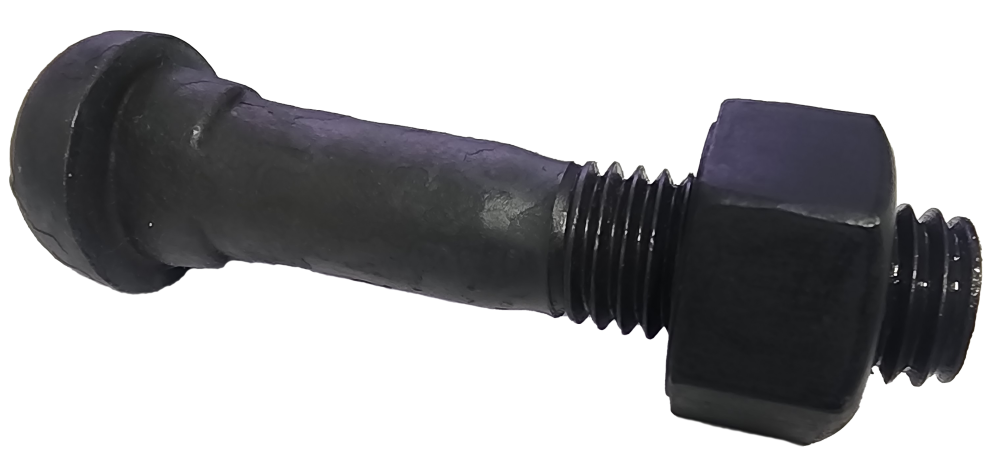
History of the Button Head Oval Neck Track Bolt
The development of the button head oval neck track bolt between 1850 and 1910 occurred within the broader context of railway fastening advancements, driven by key individuals, companies, and milestones. While specific dates for the bolt’s invention are not pinpointed due to its gradual evolution, this period saw critical innovations in rail technology that shaped its design and use. Here’s a summary with notable dates, people, and companies from 1850 to 1910 integrated into the narrative:
The mid-19th century marked a turning point for railway infrastructure as iron and steel rails replaced wood, demanding stronger fastening systems. By 1850, the transition to rolled iron rails—pioneered in part by John Birkinshaw’s 1820 patent—was widespread, and rails with pre-drilled holes for bolts were becoming common. This set the stage for specialized fasteners like the button head oval neck track bolt, which likely emerged later in the century as a refinement of earlier bolted joints. The bolt’s design, with its rounded head and oval neck, addressed the need for secure, non-rotating connections at rail ends (via fishplates) and ties, building on the foundational work of Robert Livingston Stevens. Stevens, as president of the Camden and Amboy Railroad, introduced the flanged T-rail in 1832 and demonstrated its use with spikes in 1836, laying the groundwork for subsequent bolt-based systems. His influence persisted into the 1850s as American railroads expanded, though he died in 1856, leaving others to advance fastening technology.
In the 1860s, the American Civil War (1861–1865) accelerated railway development, particularly in the U.S., as military demands highlighted the need for durable track components. Companies like the Phoenix Iron Works, established in 1855 in Pennsylvania, began producing iron rails and fastenings, potentially including early bolted designs that influenced the button head oval neck bolt. By 1869, the completion of the First Transcontinental Railroad in the U.S.—marked by the Golden Spike ceremony at Promontory Summit on May 10—underscored the importance of reliable rail joints, where bolts were critical. The fishplate, patented by William Adams and Robert Richardson in 1847 but widely adopted in the 1860s, relied on bolts to connect rail ends, and the button head oval neck design likely evolved during this period to optimize tension and stability.
The late 19th century brought further refinement. In 1876, the American Society of Civil Engineers (ASCE), formed in 1852, began influencing railway standards, indirectly shaping fastener specifications. Companies like Carnegie Steel, founded by Andrew Carnegie in the 1870s and reorganized in 1892, revolutionized steel production, providing high-quality materials for bolts. By the 1890s, the button head oval neck track bolt was likely standardized for use in joint bars and turnouts, reflecting advances in forging and heat treatment. The formation of the American Railway Engineering Association (AREA) in 1899—later AREMA—formalized these standards, with key figures like Octave Chanute (a prominent engineer who died in 1910) contributing to railway engineering principles.
Into the early 20th century, companies solidified their roles. Bethlehem Steel, incorporated in 1904, became a major supplier of rail components, including bolts, leveraging innovations from the prior decades. By 1910, the button head oval neck track bolt was a fixture in North American rail systems, its development tied to the industrial might of firms like Carnegie and Bethlehem, the engineering legacy of Stevens and Chanute, and milestones like the Transcontinental Railroad. This period from 1850 to 1910 thus reflects a convergence of practical need, material innovation, and organizational standardization that cemented the bolt’s place in railway history
